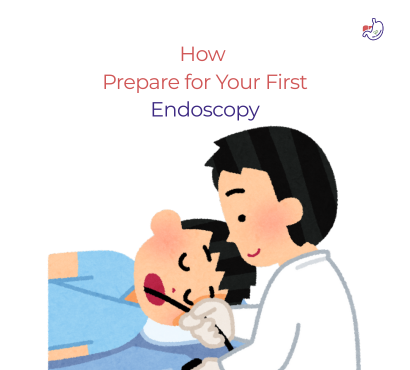An endoscopy (e.g., gastroscopy or colonoscopy) allows doctors to inspect the GI tract with a flexible tube, camera, and light, Whether it’s for persistent acid reflux, unexplained stomach pain, or anemia, understanding the prep process can ease anxiety, reduce procedural risk, and improve accuracy.
This guide empowers Indian patients and caregivers with a step-by-step plan—from pre-appointment steps to recovery after sedation.
Types of Endoscopy
- Upper GI endoscopy (gastroscopy): throat → esophagus → stomach → duodenum
- Colonoscopy: rectum → full colon (prep similar to upper GI)
- Other types: bronchoscopy, cystoscopy, arthroscopy (less commonly prepared for at home)
Before the Procedure
a) Medical & Medication Review
- Share health history, allergies, and current meds (blood thinners, insulin, asthma inhalers)
- Blood thinners like warfarin or aspirin might need adjustment to prevent bleeding—doctor will advise.
b) Fasting Guidelines
| Procedure | Fasting Rule |
| Gastroscopy | 6–8 hrs no food, 2 hrs no water/clear liquids |
| Colonoscopy | Clear liquid-only day before, plus bowel prep |
Clear liquids include water, clear juice (no pulp), black tea/coffee, broth, ORS.
c) Bowel Prep (for Colonoscopy)
- Use polyethylene glycol or laxatives to clean bowels
- Drink plenty of clear fluids to avoid dehydration
- Stick to the prep timeline strictly
Day of the Procedure
a) What to Wear & Bring
- Comfortable, loose clothing & remove jewelry
- Bring ID, referral slip, any prior scans, and consent forms
b) Transportation
- Sedation usually used, so arrange someone to drive you home
During the Procedure
- Small IV line placed for sedation
- Scope guided into GI tract, taking 10–30 min depending on type
- Possible interventions: biopsy, polyp removal, bleeding control
- Patient usually unaware or in light sleep from sedation
After the Procedure
- Brief recovery in recuperation room
- Throat may feel sore; bloating/gas is common
- Hydration with clear fluids → light meals as tolerated
- Avoid driving or vigorous activity for 24 hours
Risks & Benefits
- Benefits: accurate diagnosis of ulcers, polyps, reflux, cancer; biopsy-based insights
- Risks: bleeding, perforation (rare), sedation effects — risks minimized with proper prep
Pro Tips for Indian Patients
- Choose a reputable GI centre
- If diabetic, coordinate fasting and insulin with the physician
- Ask for hospital-provided bowel prep solutions
- Understand sedation protocols for comfort and safety
Your first endoscopy doesn’t have to be scary—it’s a routine and safe procedure when you follow proper preparation. From fasting guidelines to sedation and post-procedure care, each step is designed for comfort and precision. With this guide, you can feel confident and informed—here’s to a smooth experience and timely diagnosis.
Frequently Asked Questions
Q1: Can I take my regular medicines before endoscopy?
Continue non-blood-thinning meds like pain relievers or inhalers. Blood thinners and diabetic meds may need adjustment—follow the doctor’s advice
Q2: What if I accidentally eat or drink before fasting time?
Inform staff immediately. The procedure may need rescheduling to prevent complications.
Q3: How long before I can eat after an upper GI endoscopy?
Wait until throat numbness wears off, then start with sips of water, moving to light meals as tolerated.

